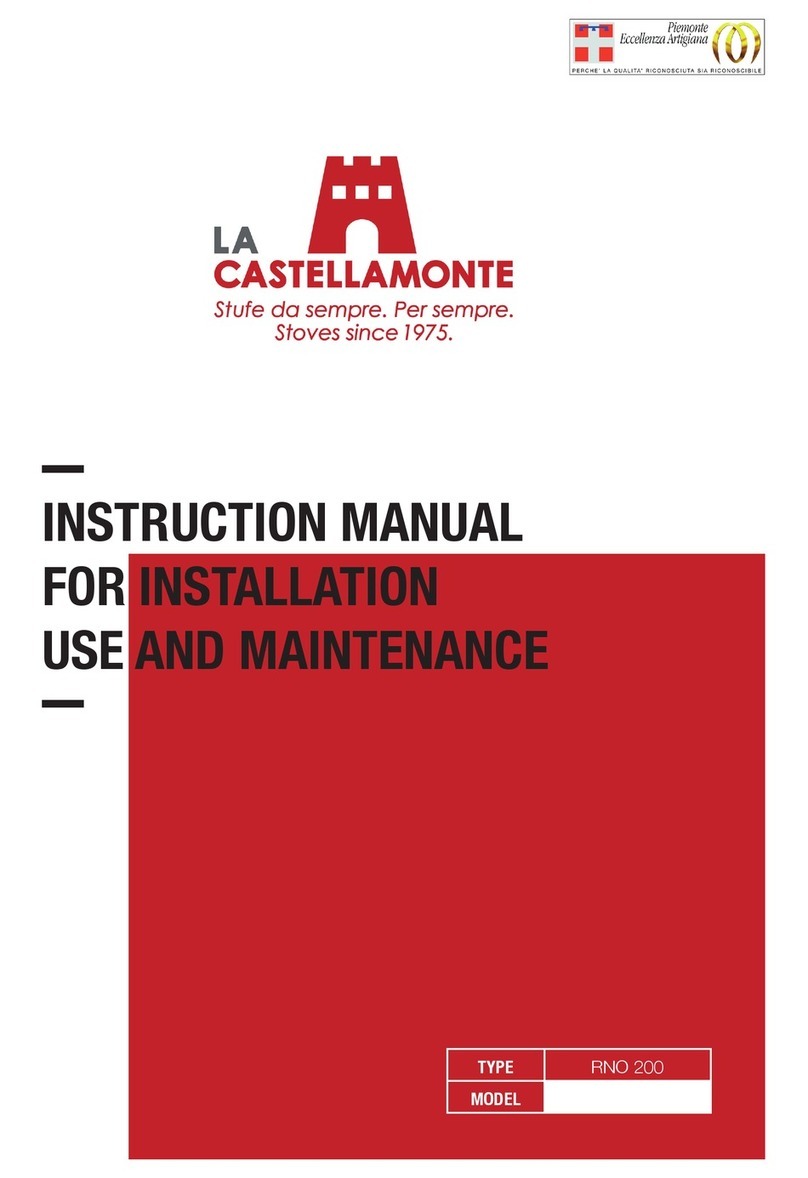
4
Please read this e tire ma ual before you i stall a d use your ew room heater. Failure
to follow i structio s may result i property damage, bodily i jury, or eve death. If you
have a y doubt, please co tact the selli g Firm or the Producer.
THE CHIMNEY FLUE
The chimney flue: our stoves’ “engine”
The chimney flue is a key element for the optimal functioning of our stoves.
Ge eral Rules
-Each stove must have its own, adequately insulated, chimney flue to the roof;
through it the smoke will flow outside, by natural draft. DO NOT CONNECT THIS
UNIT TO A CHIMNEY FLUE SERVING ANOTHER APPLIANCE.
-the chimney flue must be separated from combustible or flammable materials
(wooden roofs, matchboards and any plastic pipes) through a suitable insulating
material, for at least 30 cm (12 inches) all around. The insulation is also
recommended when the chimney is installed inside a masonry. This will prevent
the cold air from creeping between the steel pipe and the wall. Furthermore, a
good insulation will be needed in case of passage in an open floor.
-If the chimneypot is installed on a roof lower than a higher nearby roof, the
distance must be more than 5 meters (1 ,50 ft). FIG. 4A
-The inner section of the chimney flue shall be uniform and without narrowings,
possibly round shaped, with smooth walls and corners not any higher than 45°.
-The section of the chimney flue must be bigger tha the diameter of the stove
smoke pipe 150mm ( inches). For our stoves we recommend a chimney flue
diameter from 1 0 mm to 180 mm ( to 7 inches) and a chimney flue height of no
less than 2,5 meters (8 ft).
-The connection between the stove smoke pipe and the chimney flue in the wall
must be done through a pipe fitting (90° or 135°). Moreover, the connection must
not have more than two 90° bends and it must have an horizontal length of no
more than 2 meters ( ,50 ft) with a gradient of 5%. We recommend that the
chimney flue is equipped with a condensate and soot collection chamber, which
SAFETY NOTICE: IF THIS APPLIANCE IS NOT PROPERLY INSTALLED, OPERATED AND MAINTAINED, A
HOUSE FIRE MAY RESULT.
TO REDUCE THE RISK OF FIRE, FOLLOW THE INSTALLATION INSTRUCTIONS. FAILURE TO FOLLOW
INSTRUCTIONS MAY RESULT IN PROPERTY DAMAGE, BODILY INJURY OR EVEN DEATH.
CONTACT LOCAL BUILDING OR FIRE OFFICIALS ABOUT RESTRICTIONS AND INSTALLATION INSPECTION
REQUIREMENTS IN YOUR AREA





























